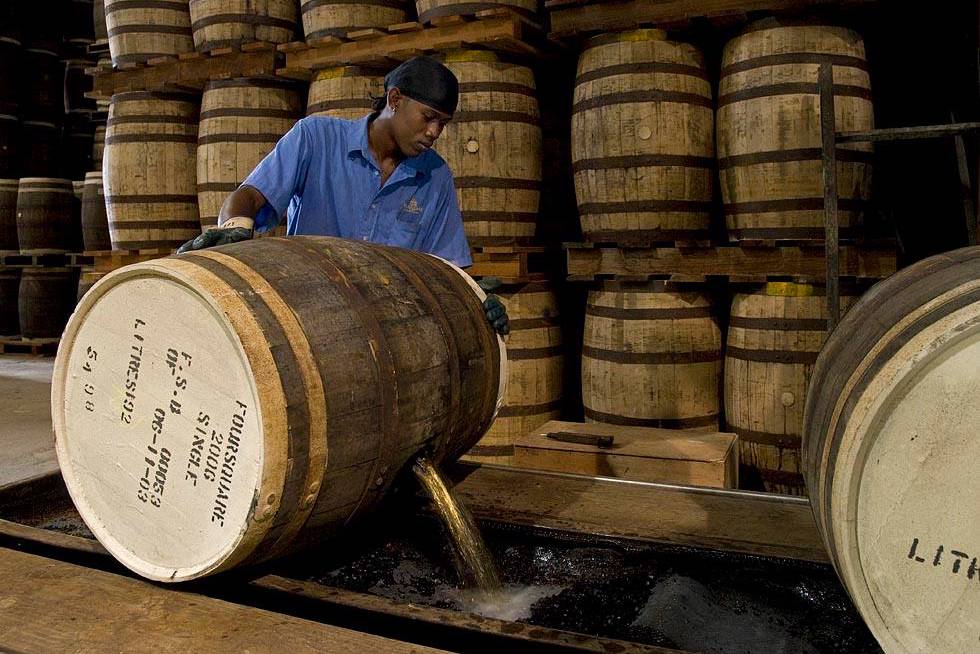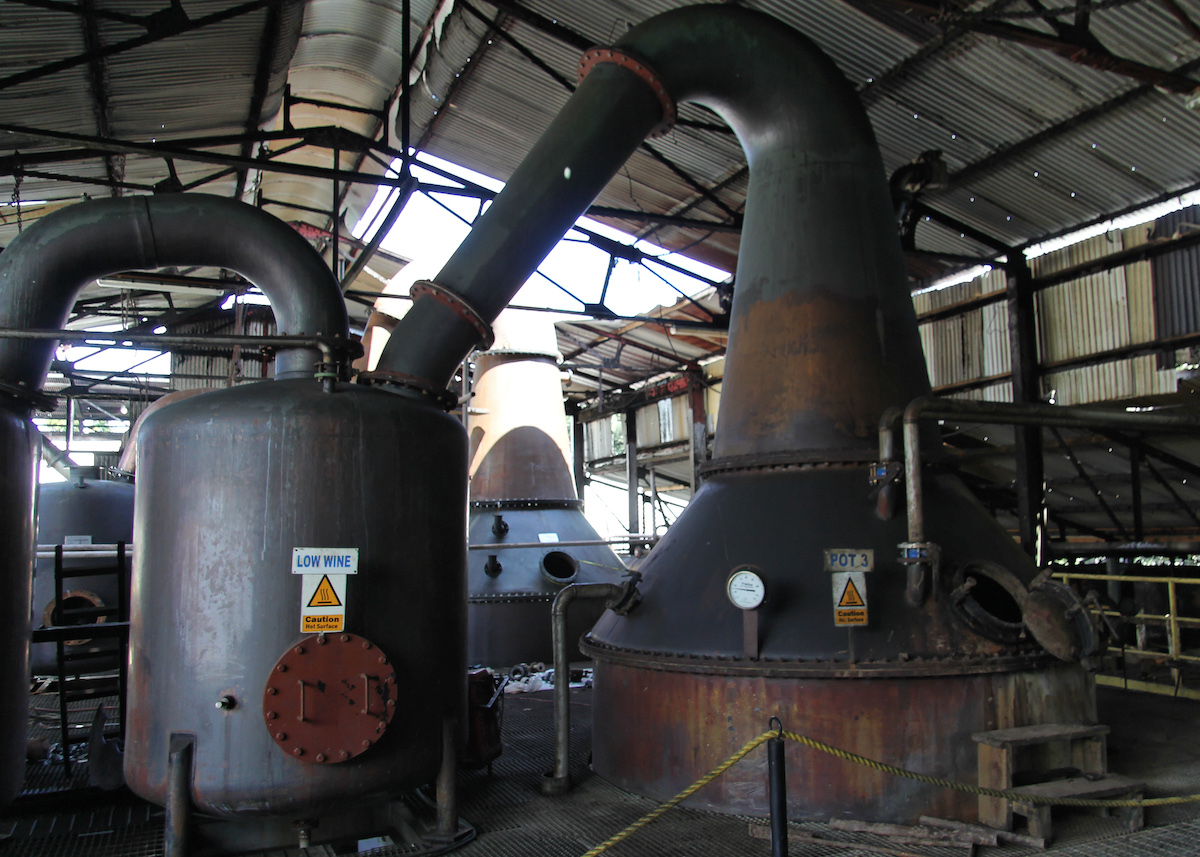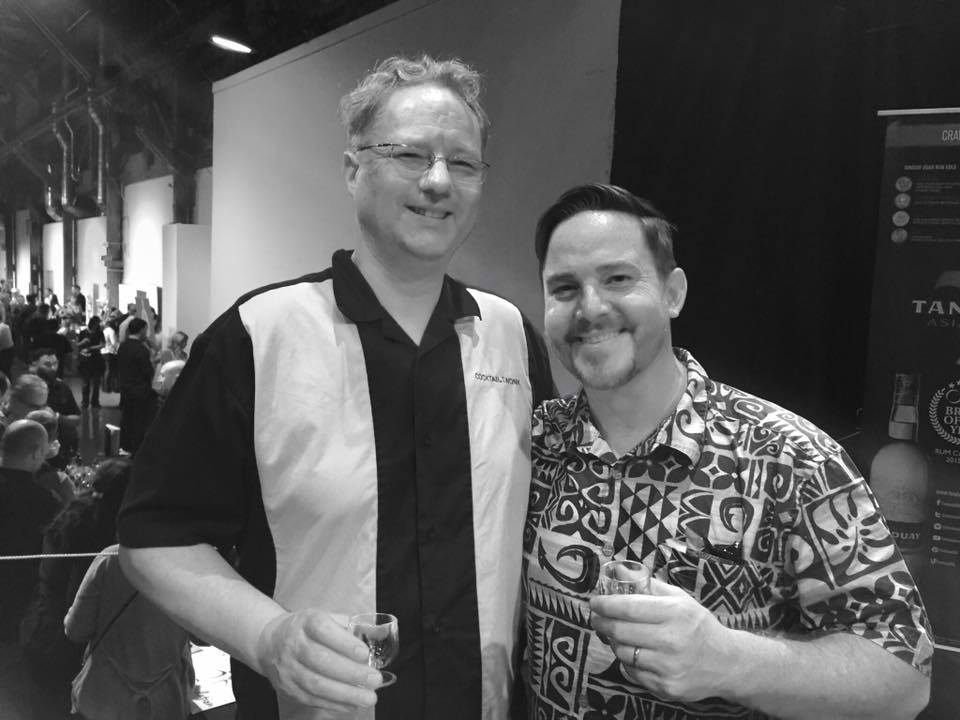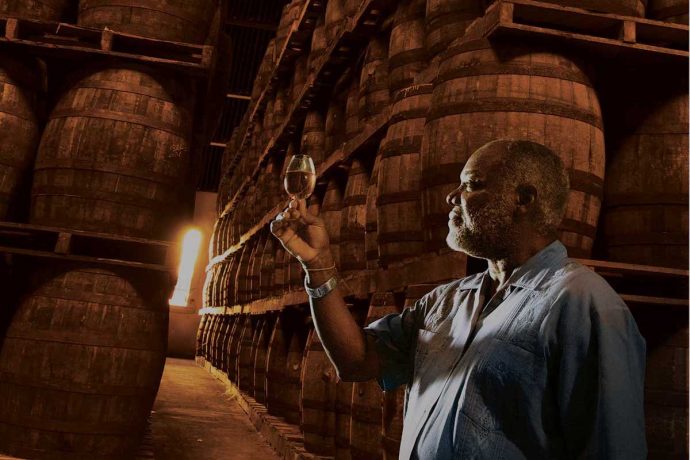Rum has a reputation problem. Ask the average imbiber about their favorite rum, and chances are good they can’t name one. Ask them to name a rum brand other than Bacardi and Captain Morgan, and you’ll often get a blank stare. While there are hundreds of rums equal in measure to any single malt scotch or cognac, the typical consumer has no idea such unicorns exist, let alone their names or where to find them.
Unlike marquee brands in other spirit categories like The Macallan or Grey Goose, the top selling Caribbean rum brands—Bacardi and Captain Morgan—focus their promotional pitch on lifestyle elements (“We are the night” or “Live like a captain”) rather than heritage and artisanal production values. Is it any wonder consumers equate rum with pirates and piña coladas, rather than craft cocktails and sitting next to a roaring fire like Nick Offerman with his Lagavulin?
Within the last two years, a grass roots movement of rum activists has formed to turn around rum’s bottom shelf perceptions. Using social media to connect, they’re creating a truly global movement of rum lovers passionately advocating for high quality rum to anybody who will listen.
Every spirit category has its enthusiasts, but rum movement participants aren’t simply touting their favorite brands. Instead, they debate rum categories, trade tasting notes, and call out fake “premium” rums and the constant torrent of blatantly misleading stories about rum. But isn’t elevating rum’s perception a task for the rum companies? Shouldn’t their brand education do the heavy lifting here?

Matt Pietrek with Appleton Estate Master Blender Joy Spence
The sad reality is that unlike single-country, deep-pocketed spirit categories like bourbon, scotch whisky, or cognac, rum has no overarching advocacy group. Thus there is no baseline education for consumers on how rum is as equally artisanal as other highly valued spirits. In fairness, a trade group known as the West Indies Rum & Spirits Producers’ Association (WIRSPA) made a stab at educating consumers across brands and countries with its Authentic Caribbean Rum (ACR) marque. However, many member companies aren’t flush with cash, and funding for promoting the ACR marque has dried up.
The typical rum enthusiast can rattle off dozens of great rum brands. But why promote these spirits and potentially drive up demand and cost? A big reason is boosting the long-term viability of their favorite brands. Small producers and independent bottlers can’t compete with the big players in terms of price, often struggling to persuade retailers to carry their products. It’s tough to stay afloat. Enthusiasts promote the smaller, high quality producers to increase their visibility, make their products more available, and preserve an ecosystem of great rum makers distinct from the mass-market giants. It’s akin to “shopping local” to support small businesses, although in this case it’s (mostly) Caribbean rum producers.
As Ivar De Laat, a Canadian real estate agent and founder of Rum Club Canada on Facebook puts it: “I value honesty. Tell it to me straight up, and I’ll respect you. I value hard work and producers who don’t cut corners in making good rum… That’s why I fight against the lies at times, regularly question certain opinions or articles, share honest articles, [and] praise and promote honest producers and their products.” If promoting rum drives up cost, he’s okay with that: “It means more money is going to the people who truly deserve it. The ones who should be very well respected for the incredible efforts they make to create all these fantastic rums.”

Foursquare Rum Distillery
On Facebook, groups such as The Ministry of Rum and La Confrérie du Rhum have tens of thousands of members. At any given moment you’ll find highly spirited debates on many topics. Any sufficiently large group of enthusiasts has people on opposing sides of the fence; within the rum community, hot button topics include:
- Brands who are making honest, high quality rum and embracing transparency, versus brands focusing on marketing inexpensively made rums as luxury items, often doctoring them with additives.
- Distinct but related is the topic of added sugar and sweeteners. While rum isn’t intrinsically sweet, many producers add sweetening agents, and these resulting rums are often perceived as smoother and more refined. Some argue it’s a longstanding tradition in some countries, others argue that it’s about duping the consumer. Folks like Johnny Drejer and Wes Burgin use hydrometers and basic science to estimate how much additive (often sugar) is added to various rums, then publish their results. When asked about why he goes to such efforts, Drejer replied, “It’s never personal, it’s just about the facts.… I started the sugar measurements with the hydrometer to make it about facts and never about pointing fingers at producers.”
- It’s generally accepted by rummies that tired old categories like white, gold, and dark are woefully misleading and inadequate. But what to replace them with? One suggestion is the Gargano categorization, a topic that warrants a future article. But even something as objective (in theory) as Gargano yields intense debate within the enthusiast crowd.

Stills at Jamaican distillery, Hampden Estate
Stoking many of the rum world’s debates is Foursquare Rum Distillery master distiller Richard Seale, who has a reputation for shining a bright, polarizing light into dark corners of the rum world. Love him or hate him, Richard excels at injecting hard facts and historical perspectives into the discussion. While partial to Foursquare’s rums (as you’d expect), he readily highlights other producers such as Jamaica’s Hampden Estate and Worthy Park who make what he refers to as “true, honest rums.” It’s rare to have any sort of in-depth discussion of rum these days without Richard’s name being invoked.
Some of the most vocal rum enthusiasts are writers, bar owners, or festival organizers who’ve turned their passion for rum into a lifestyle, visiting distilleries and posting stories and photos that would rarely if ever come from the rum companies themselves. Thanks to their efforts, we can peer into legendary distilleries like Mount Gay, Hampden Estate, Havana Club, and Rhum Barbancourt. These “from the field” reports connect the rum enthusiast with the spirit far more than any brand-created promotional material ever could.

Matt Pietrek (Cocktail Wonk) and Josh Miller (Inu A Kena)
Speaking of writers, we’re also fortunate enough to live in an era of critical “think pieces” to complement the steady stream of reviews about the latest independently bottled arrival. These highly informed essays speak frankly about the good, bad, and ugly of the rum world in a way that producer-created content can’t. Sites such as Rumporter, Inu A Kena, The Fat Rum Pirate, and The Lone Caner (plus my own site, Cocktail Wonk) regularly serve up meaty posts that serve as fodder for discussion. These glimpses are a huge part in separating the myth portrayed on the label from reality. Rum enthusiasts know that rum isn’t always pretty, but that’s a small price to pay for authenticity—the ultimate goal for the hardcore rum crowd.
This intense, informed connection to producers and brands is a huge part of the overall success of the moment to date. As Richard Seale puts it:
“Education solely in the hands of the brands is dangerous. They have clever people who can and will sell the masses perceived value over real value because it’s more profitable. Brands educate to drive profits, enthusiasts educate to improve understanding and appreciation. The enthusiasts have largely through their own diligent efforts discovered the best of rum and this ‘rum journey’ gives them a special attachment to the category that could never have been created through marketing of any one brand. It is this special attachment that sees them leading the demand for authentic rums with artisanal production, real age statements, higher proof and, most of all, no liqueurs masquerading as rum.”
It took years for categories like bourbon and single malt scotch to establish themselves as high value spirits. Rum isn’t there yet, but it is at a crossroads. The mainstream spirits press has dubbed rum a hot category. Martin Cate’s book on tiki and rum won a James Beard award, and his San Francisco bar Smuggler’s Cove—which features one of the world’s largest rum collections—was voted Best American Cocktail bar at the 2016 Tales of the Cocktail Spirited Awards.
Rum is undoubtedly getting attention right now. The question is, will the fervor fade? It may be a long haul for rum to be equated with fine spirits in the average consumer’s perception, but today’s enthusiast crowd is laying the groundwork to make that happen.




They can stop by ceasing to add caramel color, glycerin, sugar and artificial adjuncts. They should stop chill filtering. Putting a label of ingredients on each bottle wouldn’t hurt either. The liquor biz. License to print money.